Correspondents: Chen Hong (陈弘) & Zhou Lili (周莉莉) - Text & Photographs (Except Signatured)
Quanzhou: The Birthplace of Yongchun White Crane Fist – A World Famous Chinese Martial Art!8/15/2022 Translated By Shifu Adrian Chan-Wyles PhD ( © ) Yongchun (永春) White Crane Fist (白鹤拳 - Bai He Quan) is one of the seven major martial arts styles developed in Fujian Province. It was created during the late Ming and early Qing Dynasties and has spread throughout China, Southeast Asia, Europe and the United States. It is a national heritage of immeasurable cultural importance! The Southern Shaolin Fighting Method (南少林拳法 - Nan Shao Lin Quan Fa) - which developed during the Tang and Song Dynasties – was popular in Fujian by the middle of the Ming Dynasty. In the Fujian area of Yongchun - no matter whether in the city or the countryside - there were countless practitioners of martial arts! The Southern Shaolin System was prevalent but with such styles as ‘Taizu’ (太祖) or ‘Grand Ancestor’ and ‘Houquan’ (猴拳) or ‘Monkey Fist’ being very prevalent! The area was economically and culturally prosperous! The ‘History of the Ming Dynasty’ (明史 - Ming Shi), Volume 91, Martial Aspiration Three (兵志三 - Bing Zhi San) - Recollections (记载 - Ji Zai) states: ‘The people of Yongchun possess tremendous fighting-spirit and are highly skilled in martial arts practice!’ Therefore, it can be historically proved that the Yongchun people's practice of martial arts has been highly developed as early as the middle of the Ming Dynasty! Yongchun White Crane Fist is one of the seven major fighting styles developed in Fujian Province. It was founded during the late Ming and early Qing dynasties. It takes the ‘White Crane’ bird as its spiritual, psychological and physical inspiration (形 - Xing) or ‘Form’ (‘Kata’ in Japanese martial arts) and manifests this inspiration in its general fighting method! The White Crane practitioner understands how to ‘move’ and remain ‘still’ - and how to transition between these two states with a smooth and non-confused accuracy controlled by an underlying higher knowledge that embraces the practitioner, the opponent and the environment! Furthermore, a White Crane practitioner fully comprehends the ‘empty’ (虚 - Xu) and the ‘full’ (实 - Shi) and how and when each is to be used so that the opponent is continuously ‘uprooted’ - whilst the White Crane practitioner is continuously strengthened! All the energy channels in the body (the eight extraordinary and the twelve ordinary) are opened, unified and fully functioning (transporting and strengthening Qi 精, Jing 氣 and Shen 神)! As this is the case, the mind, body and spirit are unified, just as the bones and joints are aligned (allowing the bodyweight to drop into the ground – and effortlessly rebound back up and out of the body – through the relevant striking areas). All movement is perfectly timed, and the speed is so fast that an opponent has difficulty discerning the blows as they are naturally ‘released’ from the limbs of the White Crane practitioner! The hands and feet alternate with a perfect timing and balance that is bewildering to encounter! The White Crane practitioner can ‘vary’ the 'speed’ of each blow so as to bypass the habitual (and expected) movements of an opponent’s defensive reactions! The White Crane practitioner can be as solid as a mountain or as light a feather – depending upon the ‘intention’ of the practitioner and the necessity of the moment! Those who master these ‘internal’ Shaolin martial arts can appear to ‘manifest’ and ‘disappear’ at will – as they manipulate the perception of the opponent! This is why there is said to be a blend of ‘hard’ and ‘soft’ martial techniques! This style has been circulating in China and Southeast Asia for more than 300 years, and it is popular in Europe and the United States. As a consequence, this type of Chinese martial art is considered a quintessential manifestation of Chinese martial culture! According to research - Ip Man (叶问 - Ye Wen) who is well-known at home and abroad as the teacher of the great Bruce Lee – taught his style of ‘Wing Chun Fist’ (咏春拳 - Yong Chun Quan) which was heavily influenced by the fighting techniques of Yongchun White Crane Fist. Bruce Lee used all this martial arts knowledge to later develop his system of fighting termed ‘Jeet Kune Do’ (截拳道 - Jie Quan Dao)! Furthermore, Chinese, Okinawan and Japanese scholars all agree that the style of fighting known as ‘Goju Ryu Karate-Do' (刚柔流空手道 - Gang Rou Liu Kong Shou Dao) has its theoretical and technical roots firmly embedded in the fertile martial ground that is Yongchun White Crane Fist! Chen Hong (陈弘) - the President of the China Yongchun White Crane Fist Research Association - pointed out that there are many technical similarities between Fujian Yongchun White Crane Fist and the Guangdong martial style known as ‘Wing Chun Kune’ (咏春拳 - Yong Chun Quan)! For instance, before issuing a blow, the Yongchun White Crane Fist practitioner must first centre his or her own mind, body and spirit – gather up the accumulated energy and direct this ball of power toward the ‘centre-line’ of the opponent’s body! This gather and emitting ‘internal’ and ‘external’ power through the Conception Vessel 任脉 - Ren Mai) - whilst targeting the Conception Vessel of the opponent! This is the real meaning behind the ‘Centre-Line Theory’ which many only pay lip-service to. This is identical to the ‘Centre-Line’ theory as found in Wing Chun (and many other martial systems)! Furthermore, Wing Chun is also famous for the power its practitioners produce during their ‘one-inch punch’ demonstrations! This is termed ‘寸劲’ (Cum Jin) or ‘inch strength’ or the ability to generate ‘explosive short-range power’! Within Yongchun White Crane Fist, this same ability is known as ‘寸劲节力’ (Cum Jin Jie Li) or ‘inch power direct energy’! In both systems the feet are generally rooted with the knees remaining flexible to accommodate a dextrous upper body which delivers fast and massively powerful blows of all descriptions, landing at all levels! These include open and closed hands, fore-arms, elbow-strikes, upper-arms, shoulder and blows with the head! The torso ‘twists’ left and right through the pelvis and around the spine – whilst swaying and leaning left and right (forward and back at oblique angles) – all through, around, away from and back to the ‘centre-line’! The famous ‘chi-sow’ (黐手 - Chi Shou) or ‘stick hand’ technique of Wing Chun is very similar to the ‘pan shou’ (盘手) ‘enveloping hand’ technique found in Yongchun White Crane Fist! Although Wing Chun has been developed for more than 100 years, and is a renowned style of fighting, nevertheless, the shadow of Yongchun White Crane Fist still clearly looms in the background! Chen Hong (陈弘) has been researching the theory and practice of Yongchun White Crane Fist for many years, particularly with regards to practitioners living or taking refuge within Guangdong! During the Qing Dynasty reign of emperors Xianfeng (咸丰) [reigned 1850-1861] - and the Tongzhi (同治) emperor (reigned 1861-1875) - there lived a couple of Yongchun White Crane Masters named ‘Lin Jun’ (林俊) and Chen Hu (陈湖) who took an active part in the Peasant Uprisings! Indeed, many such martial arts Masters participated in these uprising! Hong Xiuquan (洪秀全) led the ‘Taiping Heavenly Kingdom’ uprising which engulfed large parts of China – including Fujian province! ‘Lin Jun’ (林俊) was personally appointed by Hong Xiuquan (洪秀全) as one of the ‘Strong Kings of Three Thousand Years’ - stationed in the Fujian area! This gave him command of thousands of Taiping troops! Despite many early victories and tremendous battles – the Taiping were defeated, and the surviving rebels had to flee! Many of these fugitives fled all over China whilst being pursued by a Qing Army led by ‘Zou Zongtang’ (左宗棠) - which drove them out of Fujian and into the Guangdong and Zhejiang areas – where the Yongchun White Crane Fist practitioners had to adopt disguises and live secret lives (whilst teaching disciples behind the scenes – often at night)! These survivors were inspired by ‘Lin Jun’ (林俊) - where his reputation is still bright and shining in China today! During the mid-Qing Dynasty, with the increasingly frequent unofficial cultural exchanges between Okinawa (Ryukyu), Japan and Taiwan, some White Crane Fist disciples went to Dongying (东瀛) to teach martial arts; many Japanese merchants who travelled to the Mainland for business and employment, also began to learn White Crane Fist and transmitted it back to Japan. During 1877, Higaonna Kanryo travelled from Okinawa to Fuzhou and studied Yongchun White Crane Fist. After three years of intense training, Higaonna Kanryo returned to his home in Okinawa – transmitting White Crane Fist as he went! After integrating White Crane Fist with Okinawan fighting techniques – the art of ‘Goju Ryu’ Karate-Do was eventually developed (by Miyagi Chojun – the key disciple of Higaonna Kanryo in Okinawa). It is clear from this example that White Crane Fist rejuvenated the Okinawan fighting arts! Another example lies with ‘Wang Xiangui’ (吴贤贵) who used to work for the Fuzhou Tower River Water Ministry (福州台江水部的 - Fu Zhou Tai Jiang Shui Bu) - but in 1912 he travelled to Okinawa where he met Higaonna Kanryo – who had established the ‘Eternal Light’ (永光 - Yongguang) Tea Shop (茶行 - Cha Xing). As he saw that Higaonna Kanryo and his disciples already knew ‘Yongchun White Crane Fist’ - he decided to teach the Okinawans the ‘Whooping Crane Fist’ (鸣鹤拳 - Ming He Quan) variant! It was the disciples of Higaonna Kanryo who had trained with Wu Xiangui that formed the ‘Okinawa Strong Foundation Association’ (冲绳刚泊会 - Chong Sheng Gang Po Hui)! Tokashiki, the President of Japan's Okinawa Goju Ryu Karate-Do Association, has been searching for many years to find the identity of the Chinese Masters who taught Higaonna Kanryo! Finally, the source of Yongchun White Crane Fist in Okinawa was discovered in Fujian - and a "remarkable monument" was raised in the Fujian Provincial Sports Centre (in 1990)! During October 1928, the first national martial arts examination was held in Nanjing since its abolition in 1911 – following the overthrow and abolition of the Qing Dynasty and its feudalist and imperialistic system! Yongchun County in Fujian sent a martial arts expert known as ‘Jin jing’ (晋京) - who placed first in every category and won every available award! Indeed, Yongchun as a place was awarded with the title ‘Central Hall of Martial Arts Execellence’ (中央国术馆 - Zhong Yang Guo Shu Guan)! This meant that a government-sponsored centre of martial arts practice was established, legally protected and funded in the Fujian area! The advent of Yongchun White Crane Fist in the 20th century served to strengthen China not only in the eyes of its own people – but also in the eyes of those across the world – a view held and expressed by Mr. Tan Kah Kee (陈嘉庚) - who further stated, ‘China as a country has been strengthened by the vigour of our own martial arts!’ He also said, ‘Promote the strengthening essence and eradicate the weak!’ During August 1929, in his honour, he requested that the Yongchun White Crane Fist School contribute to the formation of a ‘Central Martial Arts Hall Southern Fujian Martial Arts Touring and Exhibition Group’ be formed to travel around China and to do so abroad! Its first performance was at ‘Xingma’ (星马) - but became the first martial arts delegation to go abroad in the history of Chinese Martial arts - creating a precedent for overseas cultural exchanges focusing upon martial culture! Mr. Tan Kah Kee met with all the members of the martial arts troupe many times to promote the concept of ‘strengthening the country by promoting martial arts’, and on the spot, he gave the correct title to the Southern Fujian Martial Arts Troupe: ‘Who is the sick man of East Asia – Certainly not the Chinese people! This shame is eradicated by the mastery of Wu Weiyang (武维扬)! Do not forget that the grandsons and granddaughters of the Yellow Emperor can be reborn anywhere – even as fishes! Perhaps the Heros of the Central Plane Create Cities that are dry!’ In 2008, Yongchun White Crane Fist was included in the national heritage list as being of immeasurable cultural value! Today, there are an estimated 100,000 practitioners of Yongchun White Crane Fist, with thousands of experts and hundreds of top-class Masters! Fuzhou has also successfully held the first World Conference for Yongchun White Crane Fist – which attracted thousands of diverse people from all over the world – including many hundreds of Karate-Do practitioners! Yongchun White Crane Fist has also been a vehicle for good-natured and friendly exchanges across the straits! Throughout the martial arts competitions of the world - Yongchun White Crane Fist practitioners won more than 1,000 awards in various competitions at all levels! This style of martial culture is deeply rooted in Okinawa and across the world! As the theoretical and technical foundation for Okinawan Karate-Do – particularly GoJu Ryu – Yong Chun White Crane Fist has inspired a rich academic research genre, that has spread from educational facilities and on to the internet, as well as in books and in films! There have even been theatre performances, plays and other ‘live’ action and educational activities! At the same time, Yongchun White Crane Fist is entering the fields of health, culture and tourism, etc., and its comprehensive and all-round positive effect is becoming increasingly apparent. The United Kingdom, France, Germany, Russia, Moldova, Poland, the United States, Sweden, Switzerland, Iran, Malaysia and other countries, as well as Hong Kong, Macao and Taiwan, have all established professional organizations for the inheritance and practice of Yongchun White Crane Fist - in order to establish the ‘World Yongchun White Crane Fist Association' - which now has now laid a solid foundation. Reporter: Ceng Guangtai (曾广太)
Correspondents: Chen Hong (陈弘) & Zhou Lili (周莉莉) - Text & Photographs (Except Signatured)
0 Comments
 The Article is from the Fuzhou Wushu Association which Carries Out Ongoing Research into the Chinese Origins of Okinawan Goju Ryu Karate-Do! This Article is Hosted on the Above Website in Zhejiang (China) Which was Established in 2008 as an Education Facility Introducing Okinawan Goju Ryu Karate-Do to the General Population! The Above Chinese Language Script Reads '冲绳刚柔流空手道华道馆' or 'Okinawan Goju Ryu Karate-Do - Culture Way Hall' Translator’s Note: The Fuzhou Wushu Association published the original Chinese language version of this article on March 2nd, 2009 (on a Chinese language website based in Zhejiang dedicated to the history, theory and practice of Okinawan Goju Ryu). The author - Lin Weigong (林伟功) - is a government official in China who specialises in the history of Fuzhou and is an expert in the Fuzhou dialect and martial arts literature compiled in the area. He is also a practitioner of ‘Whooping Crane Fist’ (鸣鹤拳 - Ming He Quan) and has trained in the direct martial arts (family) lineage of Pan Yu Ba (Lin Dachong - 林达崇) under his brother-in-law ‘Lin Gentu’ (林根土) - who is a direct family descendant of Pan Yu Ba! I suspect that Lin Weigong is of the same general name clan of ‘Lin’ (林) as his brother-in-law – but not a ‘direct’ lineage descendant of Pan Yu Ba. When the author refers to - Xie Ruru (谢如如) - he means Xie Chongxiang (謝崇祥) [1852-1930) who was a very famous martial artist from Changle County (situated within the Fuzhou area of China). He trained under Master Pan Yu Ba (潘嶼八) who transmitted the ‘Arahant Fist’ (罗汉拳 - Luo Han Quan) system to him - with some sources also suggesting he was also taught the ‘Southern Shaolin White Crane Fist’ (少林白鶴拳 - Shao Lin Bai He Quan). Xie Chongxiang later developed the ‘Whooping Crane Fist’ (鸣鹤拳 - Ming He Quan) system. Research suggests that ‘Xie Ruru’ was the teacher of Higaonna Kanryo (1853–1915) - even though he was only one year older than his student. Lin Weigong has written elsewhere that the title of ‘Ru Ru Ko’ or ‘Ryu Ryu Ko’ known in Okinawa actually refers to an esteemed ‘Elder Brother’ and makes sense if the age difference was so small. This would imply that the tradition held in Okinawa that ‘Ru Ru Ko’ was 25 years older than Higaonna Kanryo might be a misunderstanding. Mr Tony Smith 5th Dan - has been kind enough to contact me and suggest a clarification to this text. The original Chinese language text reads that Higaonna Kanryo was the founder of Goju Ryu Karate-Do - when in fact it was his student Miyagi Chojun (1888-1953) who later described this Chinese martial arts style he had learned as being 'Goju' or 'Hard-Soft' in principle. The original Chinese language text is correct in that Higaonna Kanryo is the Okinawan 'Patriarch' of the martial arts style he learned in China. On the other hand, Miyagi Chojun did not invent the movements he named 'Goju' - and he is not the Okinawan 'Patriarch' of the martial arts lineage that he moulded into the Goju Ryu style. The Chinese language text states that Higaonna Kanryo is the 'Patriarch' and Miyagi Chojun is the 'Successor' - like a 'father' is to a 'son'. However, it is also a historical fact that Higaonna Kanryo did not refer to the Chinese martial arts style he brought back from Fujian province - and taught to his student Miyagi Chojun - as 'Goju' (Hard-Soft). Of course, it is a mystery as to 'why' it is that Miyagi Chojun was never told the formal Chinese language name for the Fujian martial arts style he had studied for many years! As far as I am aware, Higaonna Kanryo trained over a 14 year period between 1867-1881 in Fujian province. The Chinese language text states that Higaonna Kanryo trained in Fujian during the reign of the Guangxu emperor who ruled between 1875-1908. According to other Chinese language historical texts, Higaonna Kanryo trained for 8 years prior to this era and for only 6 years during it! In fact he trained for 8 years during the 'Tongzhi' (同治) imperial period (learning between 1867-1875) and 6 years during the Guangxu (光緒) era (learning between 1875-1881). Matters are complicated by the fact he left and returned to China a number of times during this time period. Interestingly, as he was born in 1853 - this means he was only 14 years old when he first arrived in China during 1867 - and 28 years old when he finished his training in China during 1881 and returned to Okinawa! Mr Tony Smith 5th Dan has stated that in the research carried-out by Higaonna Morio 10th Dan - Higaonna Kanryo travelled to China around 1868-1869 when he was 16 years old and stayed there for 14 years - leaving China around 1882-1883. According to this data Higaonna Kanryo was 30 years old when he finally returned to Okinawa. Of course, I acknowledge that there are a number of different views on this matter, and by providing accurate Chinese to English translations of vitally important historical texts, I am providing the fuel for further and progressive debate! As for myself, I acquired my Goju Ryu 8th Kyu (White Belt with two black tags) in 1988! My love and respect for Goju Ryu has never diminished! ACW (2.8.2022) According to the research carried out by Mr. Lin Weigong (林伟功) - an expert in historical records pertaining to the Fuzhou area (and confirmed by other knowledgeable authorities) - Higaonna Kanryo (东恩纳宽量), [the teacher of Miyagi Chojun - who later described the Chinese martial arts style he learned from Higaonna Kanryo as being 'Goju' [Hard-Soft]), travelled to Fuzhou (situated in Fujian province in Southeast China) to train under the guidance of Master Xie Ruru (谢如如) during the Guangxu (光绪) period of the Qing Dynasty (reigned 1875-1908) – and studied the martial art of ‘Whooping Crane Fist’ (谢如如 - Ming He Quan). He trained in this martial art for three years before returning Okinawa – and then returned to Fuzhou for further instruction. Higaonna Kanryo further developed and innovated this ‘Whooping Crane Fist’ - and thereby created a very popular and robust style of Karate-Do known as ‘Goju Ryu’ (Hard-Soft School). In recent years, various Japanese martial arts circles have organized group visits to Fuzhou many times – an interaction which has effectively promoted positive economic and cultural exchanges between China and Japan. According to relevant data and folk surveys, this relationship can be traced back to even earlier times. Master Xie Ruru is said to be the founder of ‘Whooping Crane Fist’. However, he trained under Master Pan Yu Ba (盘屿八) whose real name was ‘Lin Dachong’ (林达崇). The historical records state that Master Xie Ruru trained in the ‘Arahant Fist’ (罗汉拳 - Luo Han Quan) whilst training with Pan Yu Ba – and the implication is that the ‘Whooping Crane Fist’ evolved out of this style. After Master Xie Ruru observed the behaviour of a White Crane (defending itself) - he developed the theory and practice of the ‘Whooping Crane Fist’! Indeed, the ‘Crane Fist’ (鹤拳 - He Quan) genre of ‘Southern Fist’ (鹤拳 - Nan Quan) is just one of the hundred flowers of martial brilliance that has blossomed from within the Fuzhou area! The principle of White Crane Fist has spread far and wide and has been developed and evolved into many and interesting ‘Lineages of Crane’ (宗鹤 - Zong He). There are four main types such as ‘Perching Crane’ (宿鹤 - Su He), ‘Whooping Crane’ (鸣鹤 - Ming He), ‘Flying Crane’ (飞鹤 - Fei He) and ‘Eating Crane’ (食鹤 - Shi He). This style can also be known as ‘Morning Crane’ (朝鹤 - Chao He) and ‘Paralysing Crane’ (痹鹤 - Bi He). The birth name of Pan Yu Ba (盘屿八) was ‘Lin Dachong’ (林达崇) and he was originally from Pan Yu Township situated in the Cangshan District of the Fuzhou City region. (This area is now known as the ‘Red Star Farm’ - 红星农场). As he ranks eighth among his uncles and brothers of the same generation – he became known as ‘Pan Yu Ba’ - or ‘Pan Yu Eight’ - when his abilities became known far and wide! When he was young, Pan Yu Ba trained at the ‘Crane Nest Temple’ (鹤巢寺 - He Chao Si), situated in the Cangshan (仓山) area of Mount ‘Gaogai’ (高盖) under the ‘Head Monk’ (住持 - Zhu Chi) of that temple known as Venerable Qingding (清定). Master Qingding was an expert in ‘Shaolin Arahant Fist’ (少林罗汉拳 - Shao Lin Luo Han Quan) and taught this to Pan Yu Ba. Master Qingding was originally from Quanzhou and his fighting capabilities were considered extraordinary. As well as administrating a Ch’an temple which trained Buddhist monastics – he was also renowned as being an expert in medicine, specialising in the treatment of trauma wounds. Master Qingding established a free medical clinic on the main road to the coast between Fuzhou and Bailu (白鹭) Ridge. Local people would come to receive a diagnosis and treatment from Master Qingding. Master Qingding and Pan Yu Ba lived a thirty-minute walk apart from one another and were always in close contact with one another. Master Pan Yu Ba possessed legendary physical and mental strength! He also became a great teacher in his own right! Oneday, when his brother was building a house there was a very large foundation stone which weighed around 900 pounds and took numerous people to lift (with difficulty). Pan Yu Ba lifted this stone on his own – and was able to strike the stone and break it in half! He was addicted to alcohol and could drink a jar of rice wine without getting drunk. When it snowed and was freezing cold – he wore only a thin jacket and was not afraid of the cold. There are not many known cases of Lin Dachong competing with others, but there is only one anecdote widely known amongst the people. One day he went to Fenggangli (凤岗里) situated on Shandong Ridge (山东岭 - Shandong Ling) as a guest. He interceded between a dispute that happened between his relatives and the local people of ‘Toupu’ (透浦) Village! Master Pan Yu Ba was hunted down and surrounded by about a hundred villagers all attempting to give him a good beating! He knocked down many attacking people with his bare hands and then grabbed hold of two the attackers and used them as shields and attacking objects! This action prevented himself from being killed and the only injury he suffered was a stick blow across his back! The two people he was holding were beaten to death by the ferocity of the attack against him! So many villagers were wounded that they were sent to the clinic at Bailu Ridge to be treated by Master Qingding! As soon as Master Qingding saw the nature of the wounds – he knew exactly that it was his disciple – Pan Yu Ba – who had caused them! When Master Qingding returned to the Temple – he went to the home of Lin Dachong (Pan Yu Ba) to tell his family what had happened! He then sent out an order that Pan Yu Ba return to the mountain to explain what had happened! After Lin Dachong's death, his descendants continued to live on for another five or six generations - until the War of Resistance Against Japanese Aggression when his direct relatives died out - and today only a number of his nephews remain. Unfortunately, his boxing manual (拳谱 - Quan Pu) was lost during the Cultural Revolution. His tomb was originally located in Longfu (龙阜) at the Southern foot of Gaogai Mountain. Due to the construction of an airport, the tomb was later moved to the top of the hill near the Crane Nest Temple – where the cemetery and tombstones still exist. The Crane Nest Temple of Gaogai Mountain was located in the valley on the Southern slope of the western section of Gaogai Mountain. It was destroyed during the Cultural Revolution. In 1985, the local villagers raised funds to rebuild the temple, and now the project has begun to see fruit. The 76-year-old Lin Miaoxiu (林妙修) has presided over this temple reconstruction. In the countryside surrounding the temple there has been a natural habitat for White Crane breeding for hundreds of years and the area is full of breeding pairs! This is where the name of the temple originates, and this explains why the main symbol of the temple is a crane-shaped stone. There are a number of questions which need to be considered: Before he founded ‘Whooping Crane Fist’ (鸣鹤拳 - Ming He Quan) - did Xie Ruru (谢如如) visit ‘Crane Nest Temple’ (鹤巢寺 - He Chao Si) and meet the Ancestral Master (Qingding)? Did he receive instruction and gain inspiration from such an interaction? Did Master Qingding definitely originate from the Quanzhou area? Did Master Qingding have any direct contact with the Southern Shaolin Temple that once existed in Quanzhou – but which was destroyed by Qing Dynasty troops? These are all important questions worthy of serious consideration. If these issues can be clarified, then our all-round understanding of the martial history of Fuzhou will be enhanced. This would be an excellent development for Fuzhou culture and assist Sino-foreign relations immeasurably. For instance, in the past representatives of Okinawan Goju Ryu Karate-Do have organised groups visits to the area of the Crane Nest Temple to pay their respects to their martial ancestors! According to historical investigation, the Southern Shaolin Temple in Quanzhou was destroyed by government troops during the early Qing Dynasty, and the monks were displaced. This meant that the Southern Shaolin monks known as ‘Iron Staff’ (铁杖 - Tie Zhang), ‘Iron Shoes’ (铁鞋 - Tie Xie), Iron Handle (铁柄 - Tie Bing) and ‘Iron Beads’ (铁珠 - Tie Zhu) all had to flee in different directions for their own safety! The monk known as ‘Iron Beads’ (铁珠 - Tie Zhu) fled North to Fuzhou (still in Fujian province) and took with him the ‘Dragon Staff’ (龙桩 - Long Zhang) which comprised part of the skill of the ‘Dragon Fist’ (龙拳 - Long Quan) martial system. This monk, however, is known to have specialised in the practice of ‘Arahant Fist’ (罗汉拳 - Luo Han Quan) and this is how this secretive style of martial arts spread from the confines of the Southern Shaolin Temple in Quanzhou, to being readily available to people living in Fuzhou! (Translator: Fuzhou is located around 133 miles northeast of Quanzhou – travelling up the East Coast of Fujian province – an area immediately adjacent to the Northern tip of the Chinese island of Taiwan. This is a journey that could have been easily completed by boat). This is how the ‘Dragon Fist’ and ‘Arahant Fist’ style of Southern Shaolin martial arts spread to the Fuzhou area. Meanwhile, the Venerable Monk ‘Iron Beads’ (铁珠 - Tie Zhu) took refuge in the ‘Crane Nest Temple’ (鹤巢寺 - He Chao Si) which is situated in the Gaogai Mountains area of the Cangshan District of Fuzhou City! Later, Master ‘Iron Beads’ (铁珠 - Tie Zhu) became responsible for teaching the resident monks the ’Arahant Fist’ (罗汉拳 - Luo Han Quan) style of martial arts. One of these monks was the ‘Venerable Qingding’ (清定) who learned the ’Arahant Fist’ (罗汉拳 - Luo Han Quan) thoroughly before becoming an official lineage descendent of Master ‘Iron Beads’ (铁珠 - Tie Zhu)! Following these events, Master Qingding met the talented lay person ‘Lin Dachong’ (林达崇), accepted him as a disciple and transmitted to him the entire style of the ’Arahant Fist’ (罗汉拳 - Luo Han Quan)! My brother-in-law is ‘Lin Gentu’ (林根土) - who is from the Pan Yu Township. He is a direct descendent of ‘Lin Dachong’ (林达崇) and has passed on the ‘Fist Law’ (拳法 - Quan Fa) to me. The ‘Lin’ (林) family of Pan Yu Township state that ‘Xie Ruru’ (谢如如) learned ’Arahant Fist’ (罗汉拳 - Luo Han Quan) directly from ‘Lin Dachong’ (林达崇). Later, ‘Xie Ruru’ (谢如如) watched a ‘White Crane’ (白鹤 - Bai He) land near him. The awe-inspiring deportment of this bird influenced his creation of the martial arts style known as ‘Whooping Crane Fist’ (鸣鹤拳 - Ming He Quan). The manner in which the bird stood, moved about, arranged its feathers and positioned its beak, wings and feet – all influenced ‘Xie Ruru’ (谢如如) in his planning and structuring. Of particular interest was the general ‘Form’ (形 - Xing) or ‘Shape’ of the bird which involved a particular psychological attitude combined with a precise physical presence! Although seemingly vulnerable – the bird was actually very strong! The ‘White Crane’ manifested a perfect blend of ‘strength’ and ‘weakness’ - of ‘assertion’ and ‘giving-way’! The ‘White Crane’ uses its wings to good effect as they ‘tremble’ (抖 - Dou) before exploding with tremendous speed and power! To warn other birds of a potential danger in the immediate environment – the ‘White Crane’ issues forth a piercing ‘cry’ as the wings ‘tremble’ in preparation to deliver debilitating strikes (which include the use of the beak and the feet). The ‘White Crane’ appears ‘weak’ but is ‘strong’! Appears to be stuck in one place – but can easily move into all available spaces! The ‘White Crane’ easily ‘evades’ and yet steadfastly ‘holds’ its ground! Appears to ‘stumble’ but never loses its ‘balance’! The ‘White Crane’ is at its most dangerous when it seems to be at its most weakest – this is precisely when the ‘piercing cry’ is issued, and the opponent is in the most danger! This is why this style is called ‘Whooping Crane’ (鸣鹤 - Ming He)! Inspired by the ‘rigidity’ (刚 - Gang) and ‘flexibility’ (柔 - Rou) of the ‘White Crane’ as preserved within the ‘Whooping Crane Fist’ (鸣鹤拳 - Ming He Quan) - Higaonna Kanryo founded the ‘Goju Ryu’ (刚柔流 - Gang Rou Liu) system of Okinawan Karate-Do. This style of Karate-Do spread throughout Okinawa and across the world! The ‘Fighting Manual’ (拳论 - Quan Lun) associated with the ‘Whooping Crane Fist’ (鸣鹤拳 - Ming He Quan) style states: ‘The constant interplay of ‘hardness’ and ‘softness’ concentrates and stills the mind whilst strengthening the spirit.’ “刚柔相济定心神” A genuine martial artist cannot be only ‘strong’ or only ‘flexible - but must develop a fighting technique which envelopes both these expressions of reality. Being limited to one or other extreme will not develop martial invincibility. Indeed, a well-rounded warrior must be both firm and flexible simultaneously and consecutively! Must develop a mind-set that resides at the ‘still’ (and ‘empty’) centre of ‘hard’ and ‘soft’ - whilst being able to traverse the physical structures of the body through martial techniques that are at one moment ‘hard’ whilst at another ‘soft’. The ‘Fighting Manual’ (拳论 - Quan Lun) associated with the ‘Whooping Crane Fist’ (鸣鹤拳 - Ming He Quan) style states: ‘This Crane System depends entirely upon the mastery of ‘shaking’ (摇 - Yao) the hands!’ “鹤法全靠摇宗手” This is an important and central concept within ‘Whooping Crane Fist’ (鸣鹤拳 - Ming He Quan) as ‘shaking’ the hands is the technique (that when applied throughout the body) serves as the method through which ‘hard’ and ‘soft’ techniques are manifest and transitioned from one type to the opposite (i.e., from ‘hard’ to ‘soft’ and vice versa). The mind must be ‘still’ and ‘all-embracing’ for this method to manifest throughout the entire physical body as it traverses the environment. The ‘shaking’ (摇 - Yao) technique itself is essentially ‘soft’ (柔 - Rou) but as it permeates the mind and body - a very powerful and yet flexible (explosive) force is generated! This is the foundational teaching (宗 - Zong) that is passed on within this style! If mastered correctly, then ‘hardness’ and ‘softness’ are perfectly entwined in a continuous interplay that reacts exactly to all external circumstances and situations! The manual explains that a practitioner whose mind is chaotic and whose body is continuously overly ‘tense’ exhibit what is termed the ‘stiff hand’ (硬手 - Ying Shou) - whilst a mind that is chaotic and a body that is overly ‘weak’ is termed the ‘weak hand’ (软手 - Ruan Shou). In terms of offense and defence, being too rigid is easy to be overcome by softness, and too soft is easy to be dominated by rigidity. Between rigidity and softness, it is required to be rigid but not stiff, soft but not weak – this is how ‘vigour’ (劲 - Jin) and ‘power’ (力 - Li) are thoroughly developed. The momentary ‘softness’ is not ‘loose’, not ‘weak’, not ‘stagnant’ but rather ‘vigorous’ and ‘buoyant’ (as ‘hardness’ momentary manifests)! Change is the essence as the ten thousand situations come and go! This is how the central ‘shaking’ (摇 - Yao) technique that defines the ‘Whooping Crane Fist’ (鸣鹤拳 - Ming He Quan) should be interpreted and manifested! If this technique can be mastered, then with the slightest of touches a practitioner can respond like an arrow firing from a bow! When being attacked there is a dangerous assertion in the immediate environment! The opponent ‘congeals’ all their power in one area and the ‘Whooping Crane Fist’ (鸣鹤拳 - Ming He Quan) practitioner perceives this situation precisely. The danger of the attack is expertly avoided through evasion (the use of ‘softness’) whilst sharp and coordinated attacks (the use of ‘hardness’) are rained down upon the attacker in the direction of their undefended flanks. The counterstrikes hit home exactly with no hesitation. If the opponent changes position or attacking method – the ‘Whooping Crane Fist’ (鸣鹤拳 - Ming He Quan) moulds their reactions perfectly so the pressure is relentless and never relaxed until the threat has been neutralised. The enemy is peppered with strikes wherever their defensive gaps happen to be! The opponent is overpowered with precision! By observing the interplay of nature (the interaction of ‘hard’ and ‘soft’) the mind becomes ‘still’, ‘reflective’ and ‘expansive’. An aggressive opponent is merely an extension of the natural environment. Observing the natural processes of the environment is the same as observing the natural processes manifesting within an aggressive opponent. Correctly observe the former and the latter will be properly understood. The environment presses forward – the ‘Whooping Crane Fist’ (鸣鹤拳 - Ming He Quan) practitioner gives way – the environment gives way – and the ‘Whooping Crane Fist’ (鸣鹤拳 - Ming He Quan) practitioner presses forward! There is a continuous and flowing unity with no disconnect or over exaggeration. Within Okinawa and Japan, the ‘Goju Ryu’ (刚柔流 - Gang Rou Liu) or ‘Hard-Soft’ style of Karate-Do is well-known as being theoretically and practically premised upon the ‘Whooping Crane Fist’ (鸣鹤拳 - Ming He Quan) style! Specifically, the principle that links Goju Ryu Karate-Do to this ‘Whooping Crane Fist - (鸣鹤拳 - Ming He Quan)’ is the theory of ‘刚柔相济’ (Gang Rou Xiang Ji) or the ‘continuous interchange of ‘hard’ and ‘soft’). Indeed, it is obvious that the Goju Ryu style contains Chinese martial arts techniques that are premised upon ‘hard’ and ‘soft’ techniques that unfold in a continuous an orderly manner! Furthermore, it is clear that the ‘Katas’ and ‘Basic’ techniques contained within Goju Ryu are clearly derived from the ‘Whooping Crane Fist - (鸣鹤拳 - Ming He Quan)’ martial system. Given that the Whooping Crane Fist - (鸣鹤拳 - Ming He Quan)’ originates within the ‘Crane Nest Temple’ (鹤巢寺 - He Chao Si) which is situated in the Gaogai Mountain area of the Cangshan District, located to the South of Fuzhou City, Fujian Province. Chinese Language Article:
https://web-archive-org.translate.goog/web/20131009234332/http://gojuryukarate.cn/showart.asp?art_id=27&_x_tr_sl=zh-TW&_x_tr_tl=en&_x_tr_hl=en&_x_tr_pto=sc 空手道刚柔流源于鹤巢寺 据福州史志专家林伟功先生考证并经权威部门确认,“刚柔流”的创立者东恩纳宽量在清朝光绪年间,曾到福州拜鸣鹤拳宗师谢如如为师,学艺三年,返日后将鸣鹤拳的拳法加以创新发展,创立了空手道最大流派“刚柔流”。日本武术界近年来曾多次组团来榕寻根认祖,有力地促进了中日之间经济和文化的交流。 据有关资料和民间调查表明,这种渊源关系还可追溯到更早。福州鸣鹤拳的创立者谢如如曾师从罗汉拳名师“盘屿八”——林达崇,后来他又观察鹤的活动姿势,从中得到启发而创立鸣鹤拳。鹤拳是南拳百花中的一枝。它经过历代武术前辈的实践和总结,又有所创新和发展,流传至今已演变为“宗鹤”(即宿鹤)、“鸣鹤”、“飞鹤”、“食鹤”(即朝鹤、又名痹鹤)四大鹤拳。据调查,“盘屿八”原名林达崇,福州市郊仓山区盘屿乡人(今红星农场),因在同辈叔伯兄弟里排行第八,声名远播后被外乡人称为“盘屿八”。他年轻时拜仓山区高盖山鹤巢寺住持清定和尚为师,学少林罗汉拳。清定和尚据说是泉州人氏,拳术高超,兼擅骨伤医术,在山寺住持之余,常在福州至湾边要道上的白鹭岭挂单行医。师徒住处相距步行不到30分钟的路程,相互交往十分亲密。林达崇深得乃师真传,武艺高强,膂力惊人。相传其兄建房时,一块要多人才抬得动的六七百斤重的长廊石,他夹在腋下奔走如飞。迄今仍留存着当年因他太高放下而断为两半的一块长廊石。他嗜酒海量,能喝一坛米酒而不醉。冬日里下着雪,他只穿一件薄衣,也不畏冷。 关于林达崇与 别人较量的事例尚不多见,民间只盛传他的一件轶事:某日他到凤岗里山东岭作客,因亲戚与透浦村民的小纠纷而直言,遭透浦大批人马的持械围殴。他赤手空拳打倒多人,最后见寡不敌众就从对方阵中抓过两人却挡在身前,结果他只背部受棍伤,而那两人却被己方的棍棒打得奄奄一息。透浦人把伤员送赴白鹭岭清定和尚诊 所,清定和尚一看便知是他的高徒所为。返寺时先到林达崇家通知其家人,要达崇连夜上山找他疗伤。达崇天黑到家闻讯,知道瞒不过师父,只好遵命连夜上山听从师父安排,由此可见其师徒关系密切和相知的程度。 林达崇逝 世后,子裔尚绵延五六代人,到抗日战争时绝嗣,今仅余侄辈继嗣。其拳谱惜在文革中散佚。其墓原在高盖山南麓的龙阜,因建机场,后迁至鹤巢寺附近的山头,墓地和墓碑尚存。高盖山鹤巢寺位于高盖山西段南坡的山谷里,文革中被毁。1985年,乡人多方集资重建,现初见规模,由76岁林妙修老尼主持该寺。�ジ吒巧� 鹤巢寺先前寺周围白鹤甚多,故以“鹤巢”为名,寺里亦以鹤形石为主要象征。谢如如在创立鸣鹤拳之前,是否到过师祖的鹤巢寺,从中得到启发和教益?清定和尚 是否确为泉州人氏?与相传毁于清初的泉州南少林寺是否有什么渊源关系?这些问题值得我们深入研究。倘能探寻清楚,将对弘扬福州乡土文化起到促进作用,并对 中外经济文化交流产生积极的作用。 空手道“刚柔流”曾组团来福州鹤巢寺认祖归宗。据查,泉州南少林寺在清初毁于官府围剿,寺内僧侣流离失所,少林四武僧铁杖、铁鞋、铁柄、铁珠亦在其中。四僧之一的铁珠身怀龙桩(龙拳)和罗汉拳逃到福建福州,故龙拳和罗汉拳也随之传到福州。铁珠和尚避难至福州市仓山区高盖山的鹤巢寺里,后将罗汉拳传给寺里的僧人,也传给了清定和尚,清定又传授给爱徒林达崇。我的姐夫林根土(盘屿乡人)是林达崇的后裔,他将该拳法传给了我。而谢如如曾向林达崇学罗汉拳,后受到白鹤衔理羽毛形态的启发而创鸣鹤拳。因白鹤善用翅抖弹,常发声,以声助力,故有“鸣鹤”之称。 东恩纳宽量受了鸣鹤拳刚柔相济的启发,创立了日本空手道的最大流派“刚柔流”。鸣鹤拳拳论中云“刚柔相济定心神”。一种拳法只有刚劲是不行 的,只有柔劲也不行,必须刚柔俱备,刚柔相济。鸣鹤拳拳诀云:“鹤法全靠摇宗手”。鸣鹤拳中手法和身法的变化方式称为摇,摇为柔;内身发出一种极其刚强有 力弹劲谓之宗,宗为刚。刚柔相济是为正宗 在技击上过刚的手法称为硬手或坏手,过柔的手法称为软手。从攻防上来说,过刚易被柔克,过柔易被刚制。在刚柔之间要求做到刚而不僵,柔而不软,劲力透达。 柔应不松、不软、活泼不滞、变化万千,即鸣鹤拳所要求的“摇”。能做到这一点,那么在技击时就能“触即变、发如箭”,当你一接触到攻击时,就 应善于观察其攻势,即时变化自己的手法击败对方,“吞吐浮沉君须记,刚柔相济定心神”,日本空手道的最大流派“刚柔流”即取鸣鹤拳的“刚柔相济”之拳诀而 享誉日本武术界。而“刚柔流”的不少招式、手法,还明显带有鸣鹤拳的痕迹,所以说日本空手道的“刚柔流”源出于福建省福州市南郊仓山区高盖山的鹤巢寺。 |
AuthorShifu Adrian Chan-Wyles (b. 1967) - Lineage (Generational) Inheritor of the Ch'an Dao Hakka Gongfu System. |
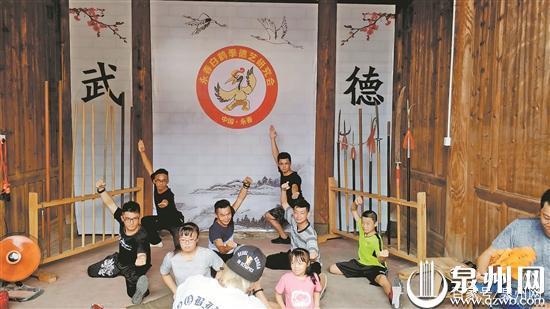
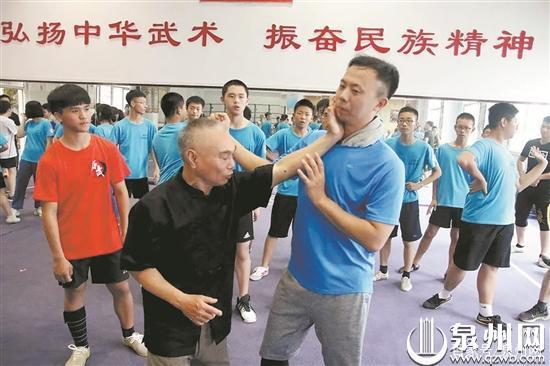
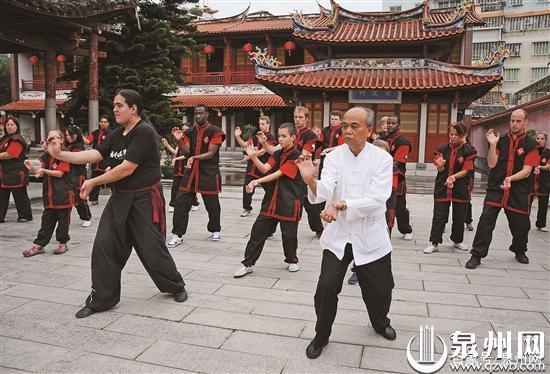
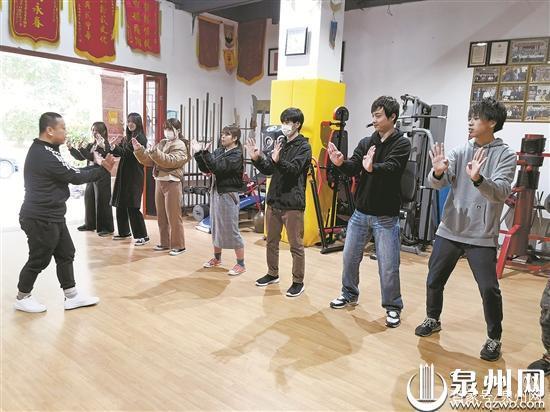
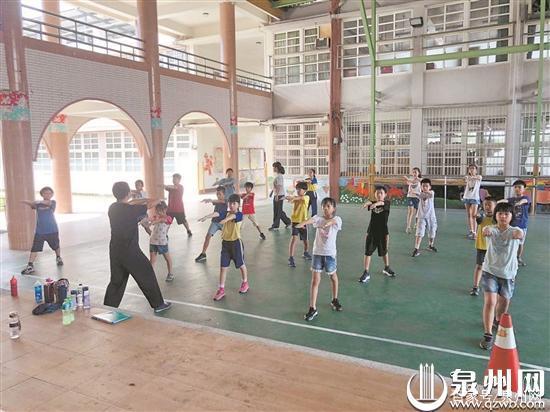
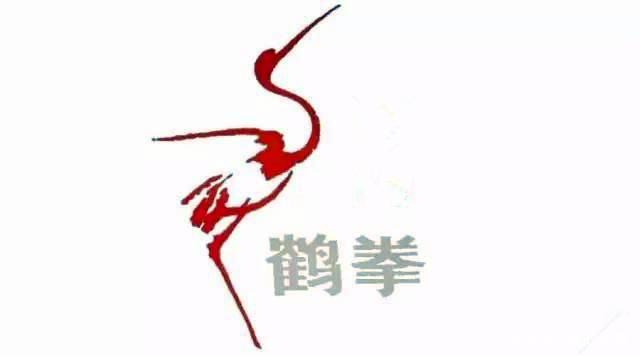
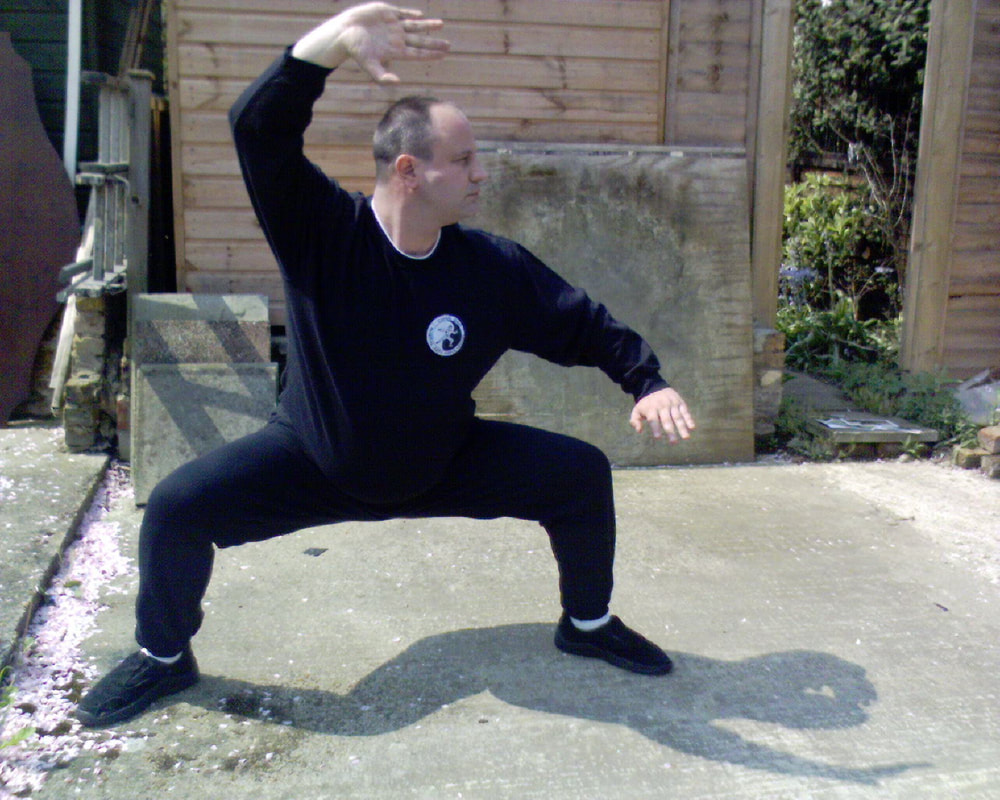
 RSS Feed
RSS Feed